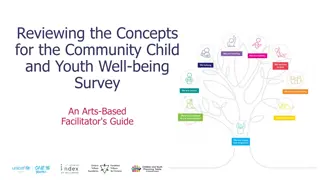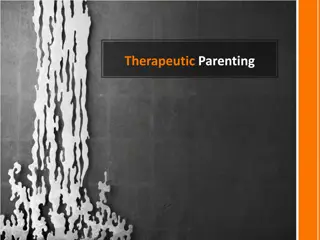Prioritizing Your Child's Social-Emotional Well-Being
Supporting your child's social-emotional well-being is crucial for their overall development. This involves promoting positive relationships, facilitating healthy habits, and maintaining balance in their lives. By engaging in open conversations, spending quality time together, and encouraging resilience, you can help your child navigate their thoughts, feelings, and behaviors effectively.
Download Presentation

Please find below an Image/Link to download the presentation.
The content on the website is provided AS IS for your information and personal use only. It may not be sold, licensed, or shared on other websites without obtaining consent from the author. Download presentation by click this link. If you encounter any issues during the download, it is possible that the publisher has removed the file from their server.
E N D
Presentation Transcript
Making Your Childs Social-Emotional Well- Being a Priority
Welcome Welcome Sarah Hauser - School Psychologist Tara Bissette - School Counselor
Social-emotional = mental health Our capacity to manage our thoughts, feelings and behavior.
Promoting positive social/emotional development and well-being in children impacts their behavior, learning and health outcomes.
In WCPSS there is a new emphasis on Social-Emotional Learning (SEL) Specific Required SEL Counseling lessons in 2nd, 3rd, 4th, & 5th Positivity Project each morning at Herbert Akins PBIS with SOARing (Safety, Ownership, Achievement, Respect) Character Education
What Can You Do at Home to Promote Social- Emotional Well-Being?
Talk to Your Child about Happiness and a Healthy Lifestyle Talk to Your Child about: Maintaining Balance/Reducing Stress Failure and Resiliency
Facilitate Positive Relationships Spend time together (indoors and outdoors) Facilitate Positive Relationships: Do an activity together Monitor/limit screen time Play dates and activities outside of school
Promote balance/avoid overscheduling Teach your child how to communicate well with others
Encourage and Share Healthy Habits: Eat Healthy & Exercise Encourage and Share Healthy Habits: Be Present Practice Mindfulness Show Gratitude
Be Aware of Stressors and Build Resiliency
1. Parent having problems 2.Fight with a friend or sibling 3. Taking a test 4.Wondering if someone thinks they re attractive (teens especially) 5. Not having enough privacy
6. Birth of a brother or sister 7. Moving to a new school 8. Remarriage of a parent 9. Not having enough money 10. A teacher who doesn t like you
Modeling coping strategies Use other emotional words instead of stressed Ask how can I help or how would you like for me to help
Unstructured play Consistent environment at home Establish rules/routines Make sleep a priority
Practice time management skills Celebrate effort Volunteer and help others
Help Build Resiliency The capacity to bounce back from adversity and disappointments
Acknowledge strengths Set realistic goals/expectations Embrace challenges Incorporate a growth mindset
Angela Duckworth - Video
Experiencing Failure: Experiencing Failure: Allow children to experience failure Help them recognize that mistakes are experiences from which we learn and grow
Share personal experiences with overcoming failure
Resources Resources Headspace Common Sense Media Calm down Yoga Routine Cosmic Kids Yoga
Contact Information Sarah Hauser - shauser2@wcpss.net 919-567-4100 ex 20182 Tara Bissette- tbissette@wcpss.net 919-567-4100 ex 20180
Please Complete Feedback Survey























